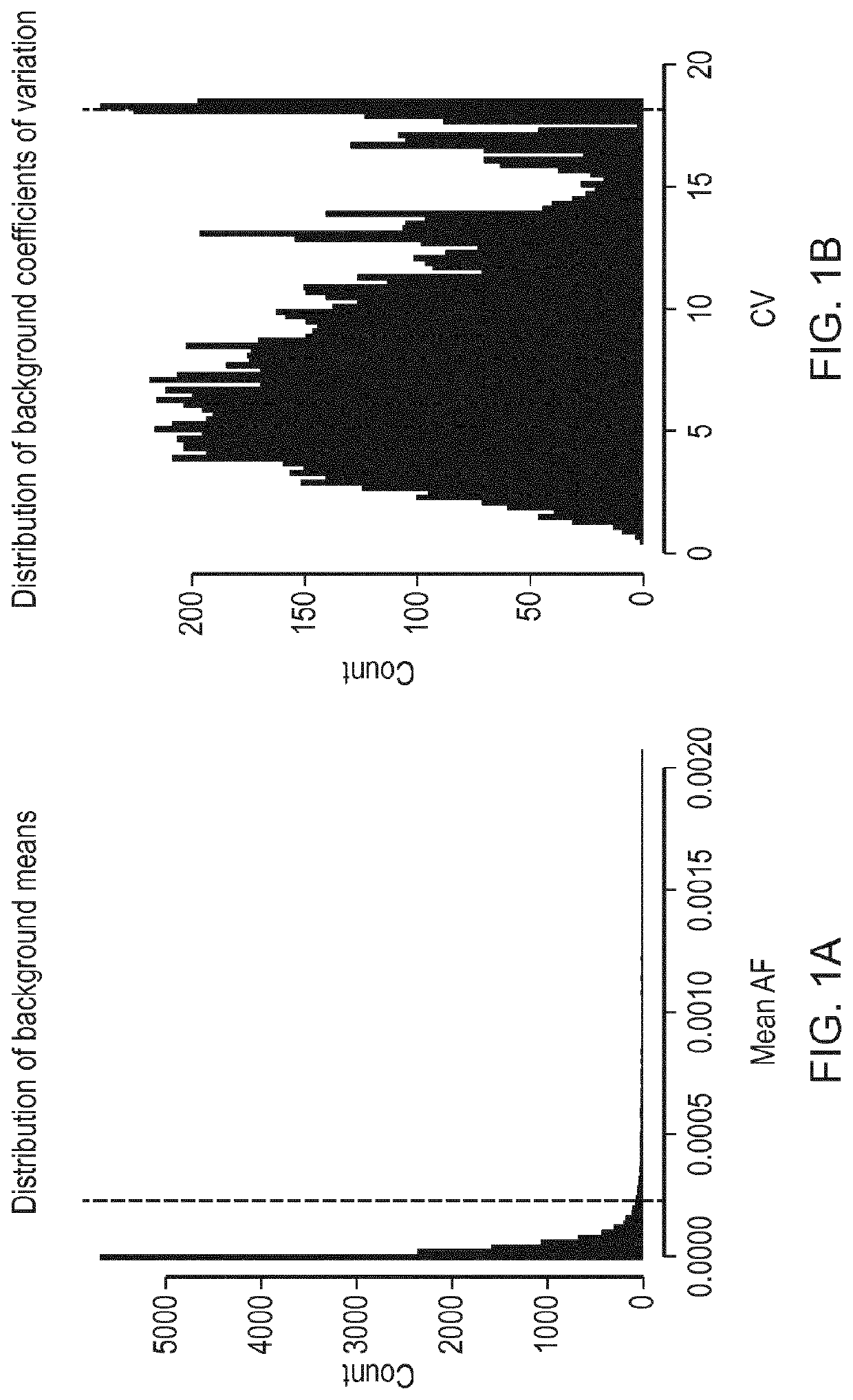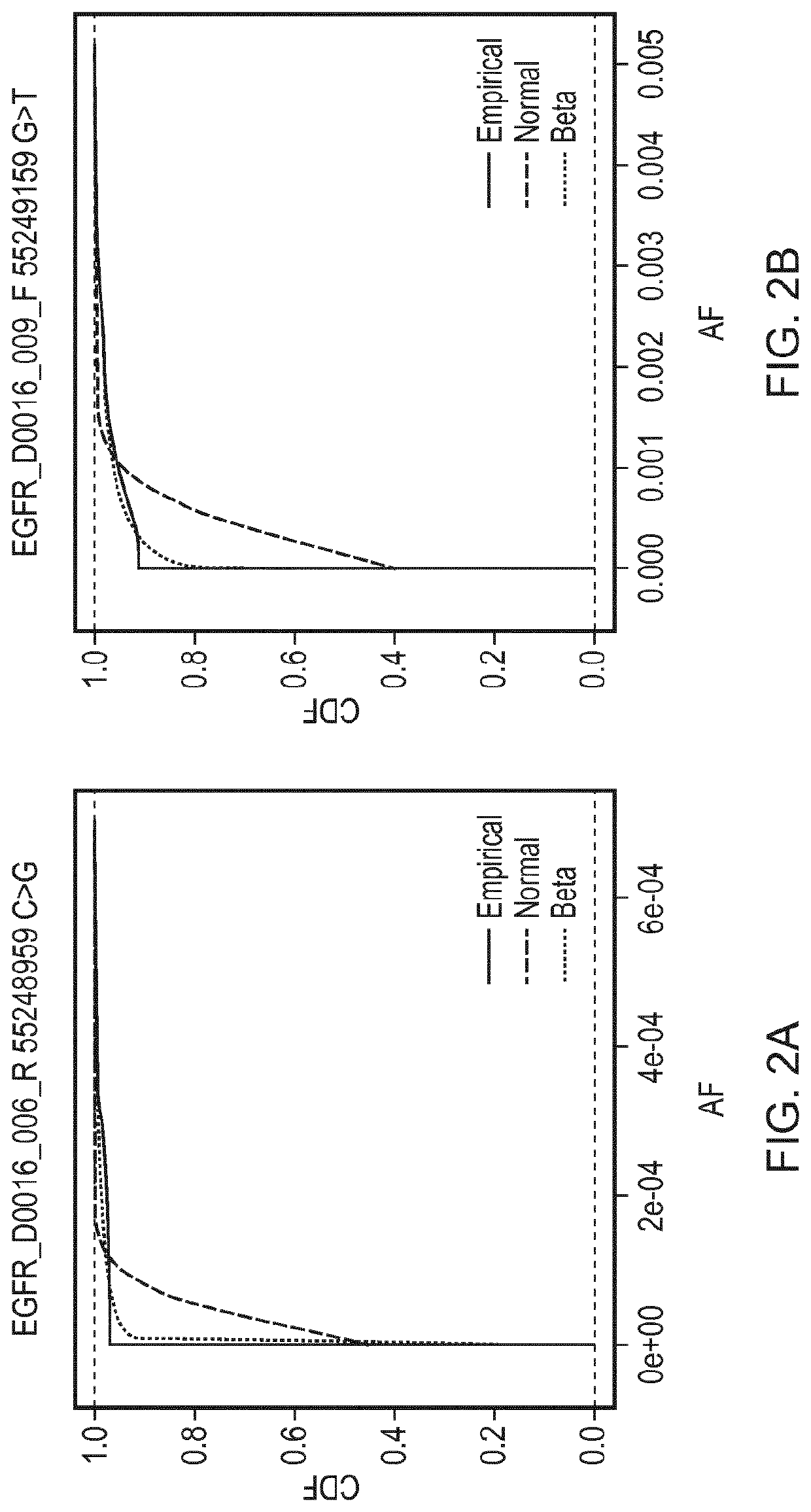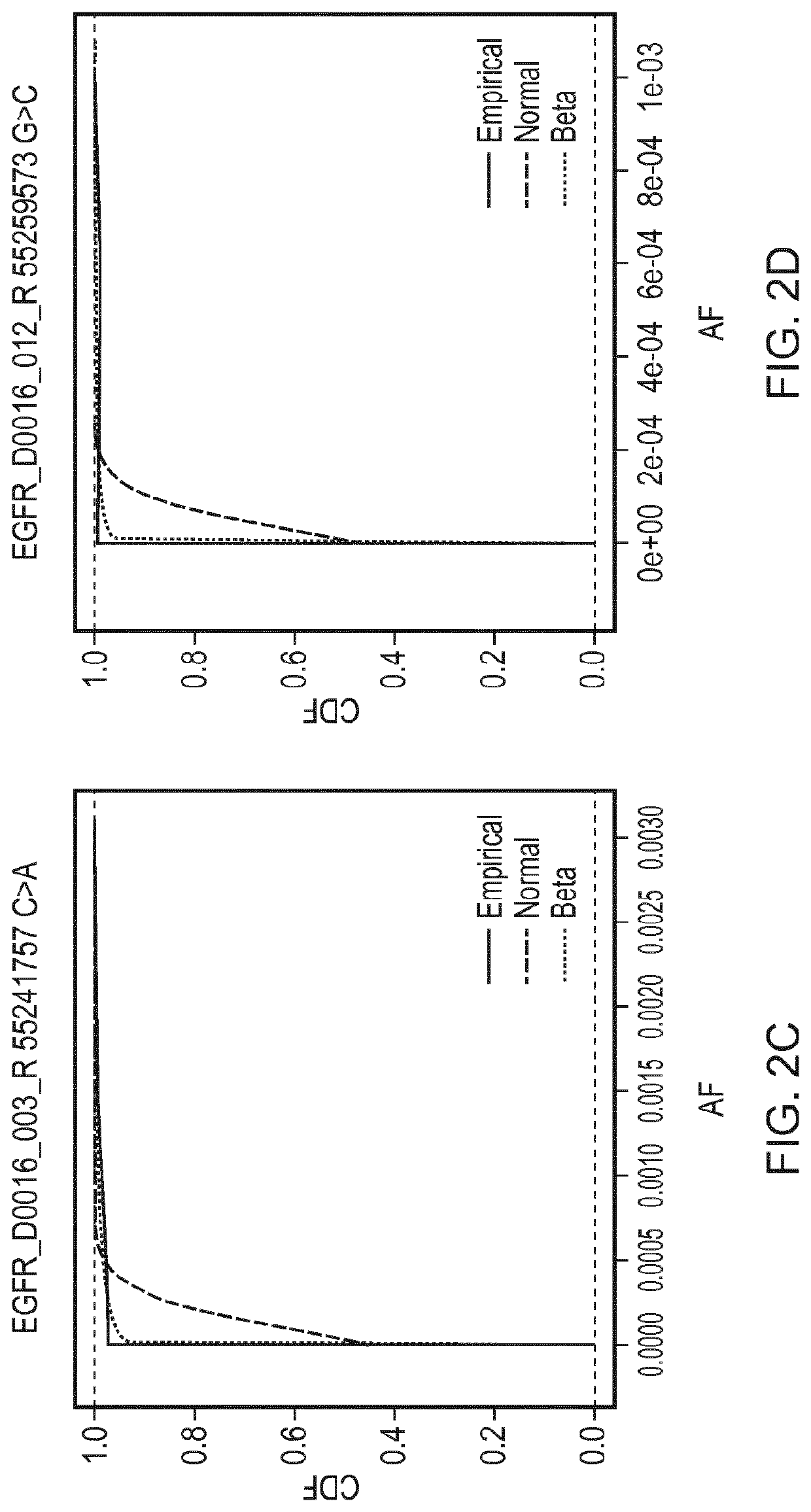Method for detecting a genetic variant
a genetic variant and method technology, applied in the field of methods of detecting genetic variants, can solve the problems of high error rate of dna sequencing platforms, difficult or impossible to determine whether a genetic variant identified is real, and inaccurate determination of nucleotide positions in dna templates, etc., to achieve improved statistical confidence and high probability
- Summary
- Abstract
- Description
- Claims
- Application Information
AI Technical Summary
Benefits of technology
Problems solved by technology
Method used
Image
Examples
example 1
Determination of Background Noise
[0188]41 amplicons were designed, covering all of TP53 and hotspot regions in EGFR, KRAS, BRAF and PIK3CA, and were read in forward and reverse directions, giving 82 read families in total (Table 1). The amplicons cover 5,038 bases including overlapping forward and reverse reads (excluding primer sequences).
[0189]
TABLE 1LeftRightChromosomecoordinatecoordinateAmplicon namechr7140453098140453187BRAF_D0016_001_Fchr7140453128140453217BRAF_D0016_001_Rchr75524158955241678EGFR_D0016_001_Fchr75524162055241709EGFR_D0016_001_Rchr75524165855241745EGFR_D0016_002_Fchr75524165955241746EGFR_D0016_002_Rchr75524170555241792EGFR_D0016_003_Fchr75524170655241793EGFR_D0016_003_Rchr75524238555242474EGFR_D0016_004_Fchr75524239755242486EGFR_D0016_004_Rchr75524242755242516EGFR_D0016_005_Fchr75524244855242537EGFR_D0016_005_Rchr75524893155249020EGFR_D0016_006_Fchr75524893855249027EGFR_D0016_006_Rchr75524898955249078EGFR_D0016_007_Fchr75524901155249100EGFR_D0016_007_Rchr7552490...
example 2
Determining the AF Required for a Positive Call for a Base Change in a Given Reaction
[0195]A reaction was defined as positive for a given sequence change if the observed AF was found to be greater than the minimal detectable frequency (MDF) for that allele. The MDF for an allele was calculated as the AF at which the cumulative distribution function (CDF) for that particular base change crosses a predefined threshold (CDF_thresh).
[0196]FIG. 2 shows cumulative distributions for several base changes of the panel of Example 1. Cumulative distribution functions for the Normal and Beta distributions are shown, fitted using the values for the mean AF and CV that were calculated for those base changes, compared against the empirical distributions of the data. The Kolmogorov-Smirnov value for goodness of fit for the Normal (KS
[0197]Normal) and Beta (KS Beta) distributions to the empirical distributions of the data are as follows:
[0198]
Base changeKS NormalKS BetaEGFR_D0016_006_R 55248959 C > ...
example 3
Determining the Number of Replicate Amplification Reactions to be Positive for a Given Base Change to Determine Presence of the Base Change in a Sample
[0205]To minimise false positive determinations for the presence of a base change in a sample, multiple positive replicate amplification reactions (N) were required out of the total number of replicate amplification reactions for that sample (T).
[0206]The theoretical probability of a false positive appearing in N out of T reactions (P_fpNT) is
P_fpNT=(P_fp1T){circumflex over ( )}N)*C_NT=((1−CDF_thresh){circumflex over ( )}N)*C_NT
where “C_NT” is the number of possibilities of choosing N wells out of T without attention to order, and is
C_NT=T! / ((T−N)!*N!)
where “!” indicates the factorial function.
[0207]For example, for choosing 3 reactions out of 48 there are 17,296 possibilities. For choosing 2 reactions out of 48 there are 1,128 possibilities. The expected rate of false positives was calculated for each sample and is shown in Tables 2...
PUM
| Property | Measurement | Unit |
|---|---|---|
| threshold frequency | aaaaa | aaaaa |
| frequency | aaaaa | aaaaa |
| threshold frequencies | aaaaa | aaaaa |
Abstract
Description
Claims
Application Information
 Login to View More
Login to View More - R&D
- Intellectual Property
- Life Sciences
- Materials
- Tech Scout
- Unparalleled Data Quality
- Higher Quality Content
- 60% Fewer Hallucinations
Browse by: Latest US Patents, China's latest patents, Technical Efficacy Thesaurus, Application Domain, Technology Topic, Popular Technical Reports.
© 2025 PatSnap. All rights reserved.Legal|Privacy policy|Modern Slavery Act Transparency Statement|Sitemap|About US| Contact US: help@patsnap.com



